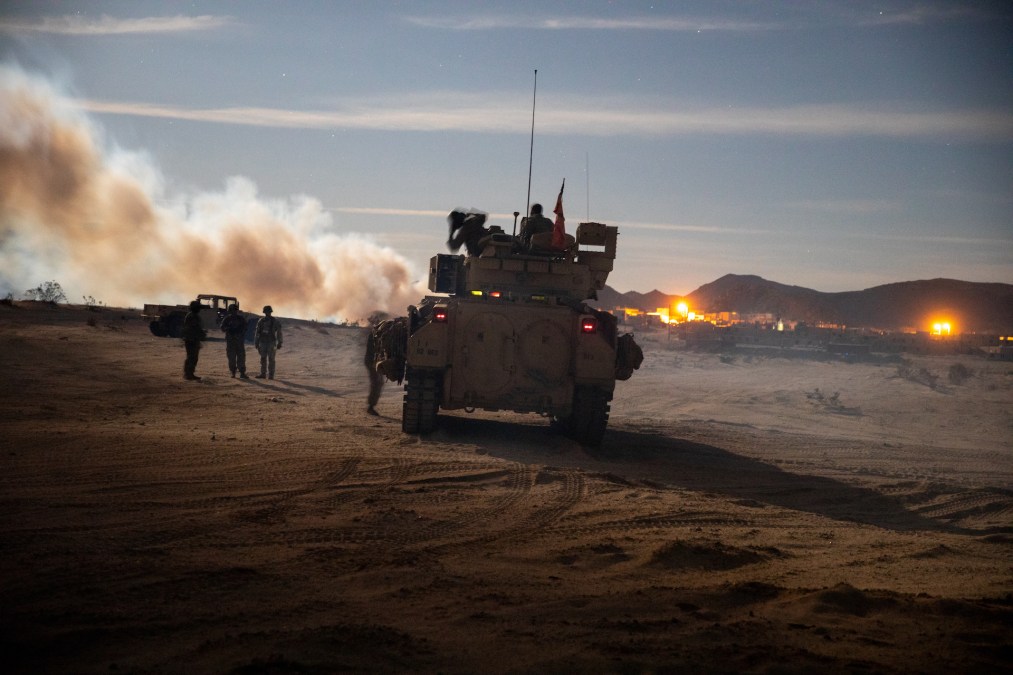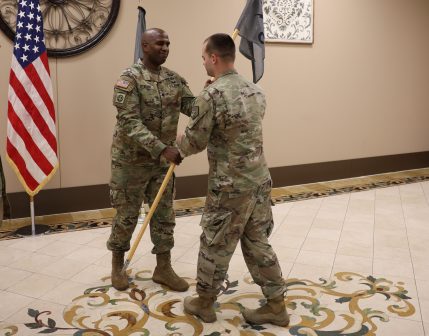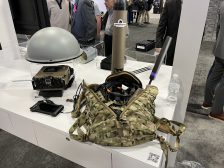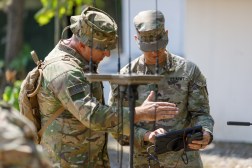Army trying to expose entire force to electromagnetic warfare during training

AUGUSTA, Ga. — Given the significant threat electronic warfare will pose in potential future conflicts, the Army wants its entire force — not just technical EW specialists — familiar with the effects and capabilities.
“Every soldier in the Army has to understand the impacts of EW,” Maj. Gen. Paul Stanton, commander of the Cyber Center of Excellence, told reporters during a media roundtable at the TechNet Augusta conference Thursday.
One of the Army’s guiding principles for its digital transformation is ensuring units maintain a low or reduced signature in the electromagnetic spectrum, which program offices are accomplishing by delivering technologies to help units lessen, manage and obfuscate their signatures.
But more broadly, soldiers must understand the risks. Stanton said the Cyber School is conducting a partnership with the Maneuver Center of Excellence along with the infantry and armor school to expose students to the effects of jamming and geolocation in the electromagnetic spectrum.
The plan is to start with the Maneuver Center and then expand the initiative to the Army’s other centers of excellence.
Additionally, units are being exposed more and more to jamming at their home station training locations as well as when they go to combat training centers for their validation rotations.
Getting soldiers exposed earlier at home stations will allow them to be more prepared when they go to a combat training center. Those rotations are high-stress environments in which entire campaigns are shrunk to two weeks for the purpose of meeting numerous training requirements and validating units. Failing due to a jamming capability would be detrimental to the entire unit’s trajectory in the Army, affecting which units meet certain readiness thresholds.
“We are exposing our forces to the EMS at the training center. That’s not good enough,” Stanton said. “We own large portions of the electromagnetic spectrum for training purposes at Fort Irwin [in California]. Now what we need to do is take those same lessons and bring them back to home station so that the first time that a soldier is exposed to being jammed is not when they’re being graded in their final exercise, or worse yet, in a real-world situation.”
This ends up being more complicated in practice because each Army installation has different regulations regarding what can be done in the spectrum. Turning on jammers requires coordination with other federal agencies so as to not interfere with commercial systems such as airplanes, which limits training and testing.
“We want to standardize the capability of turning on a jammer. However, each individual installation has responsibilities to build the electronic warfare range within their individual footprint,” Stanton said. “The Cyber School … is building out, hey, what do you need in the backwoods of Fort Campbell or at Fort Cavazos or at Fort Moore in order to train not cyber soldiers, but every soldier in the Army. There are a lot of specific regulations that we have to work our way through. The authorities to operate in the EMS at each home station is a little bit different, because many of those are localized. We’re working our way through that process right now.”
Forces at combat training centers, specifically the National Training Center at Fort Irwin, are met with a formidable electronic warfare capability from the opposing force that will jam units and geolocate them based on their signatures. In some cases, more advanced units going through Fort Irwin will use their own EW capabilities against the opposing force, Stanton said.
Another change the Army is making when it comes to home station exposure and training within the spectrum, is putting more focus on counter-electronic warfare.
“The big pivot right now is in emissions control. How do you get left in that kill chain so that they cannot identify you? If they’re identifying you, we’re using other obfuscation means by which they may have identified you, but there are decoys … and then they’re unable to target you,” Todd Boudreau deputy commandant of the Cyber School, told reporters. “A lot of the effort right now is pivoting from reacting to electromagnetic interference or electromagnetic attack to conducting counter-EW measures, which is emissions control.”
For EW-specific forces, Fort Gordon has received approval from the Army to build its own electronic warfare range where soldiers will be able to maneuver with their gear and employ it.
“We move forward with a cyber and EW multipurpose training range on Fort Gordon. It’s about 600 acres right in the middle of Fort Gordon. It has undulating terrain, it has vegetation, the humidity — all that we want. That was approved by the Army and is already in the [program objective memorandum] right now and is being influenced,” Boudreau said. “That will allow us to go from crawling with our students to then engaging the environment, movement and maneuver, light discipline, noise discipline in a combat environment, to be able to set up their height sights, to be able to do their mission to find, fix, finish the adversary and then to be able to move tactically as well.”
Stanton said this is critically important as EW soldiers will be on the front lines and must have that practical maneuver experience to be successful.






